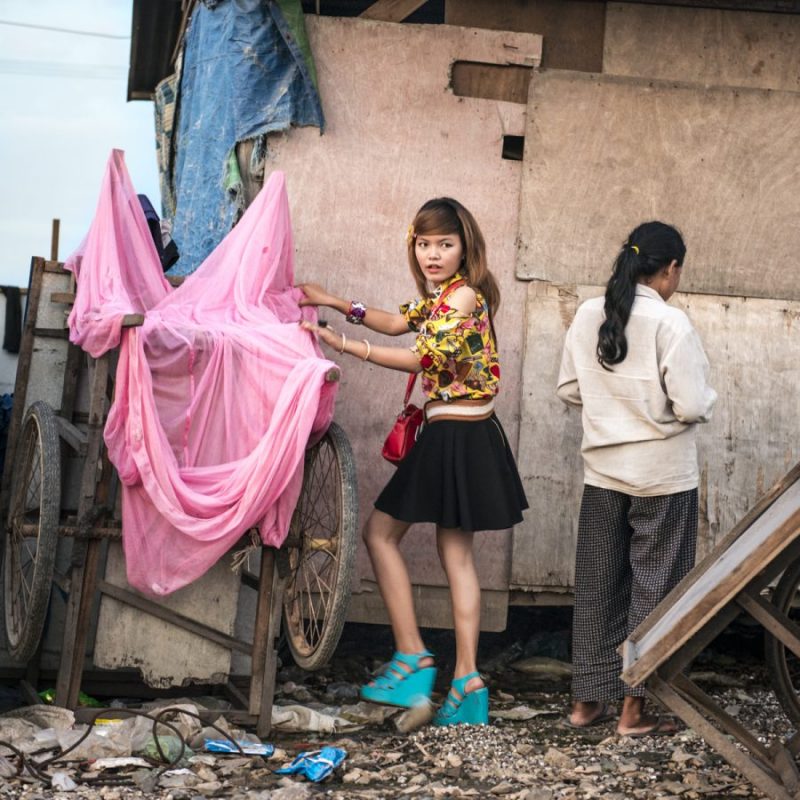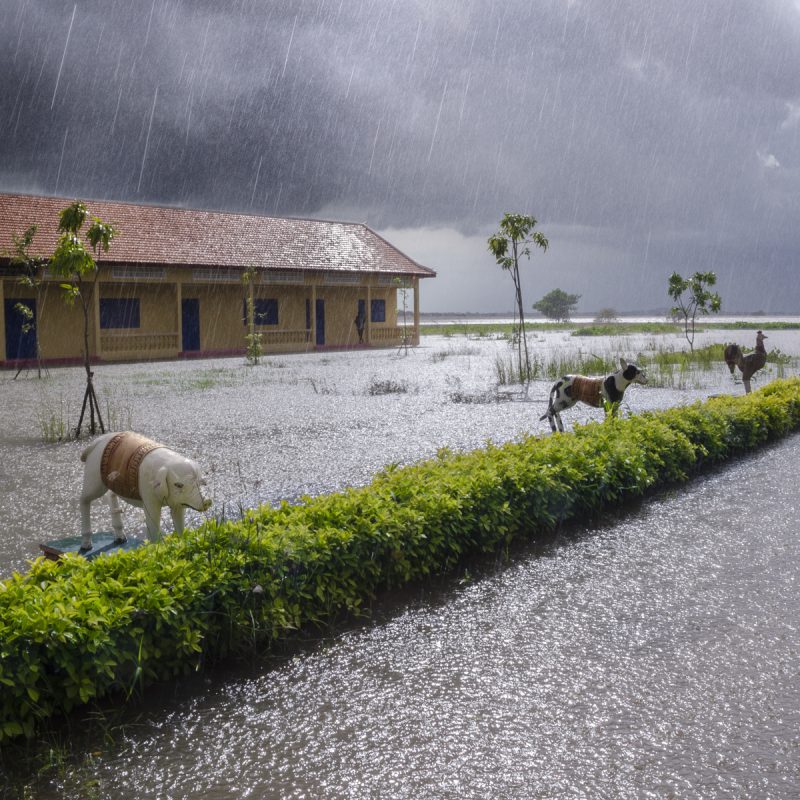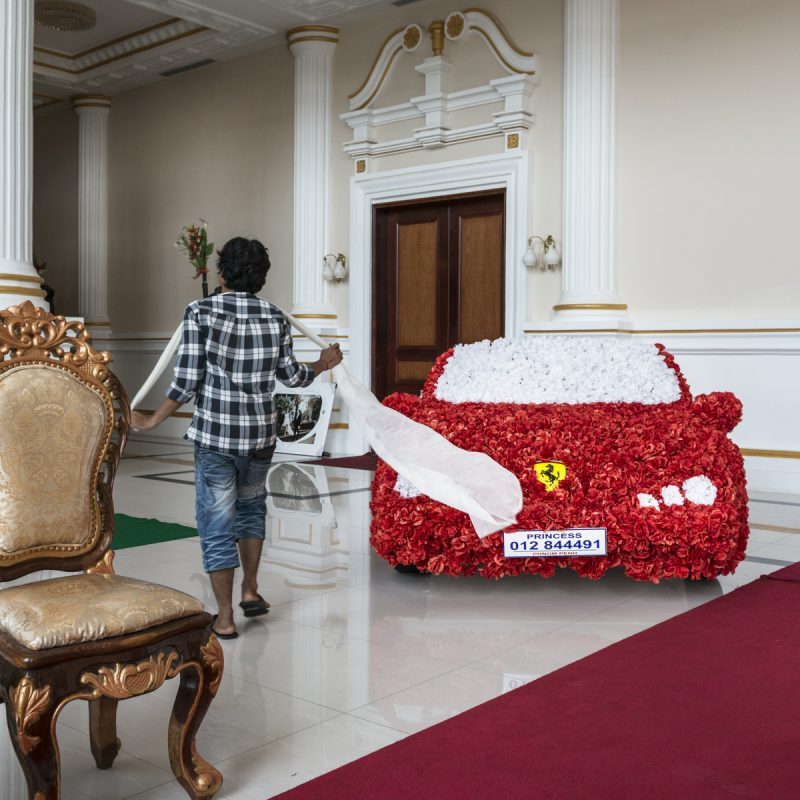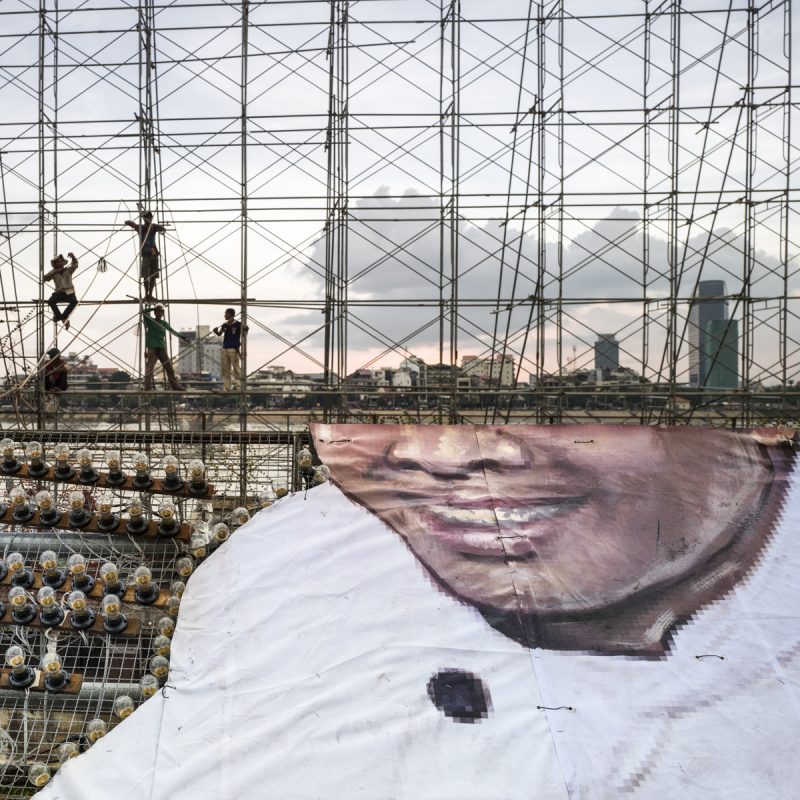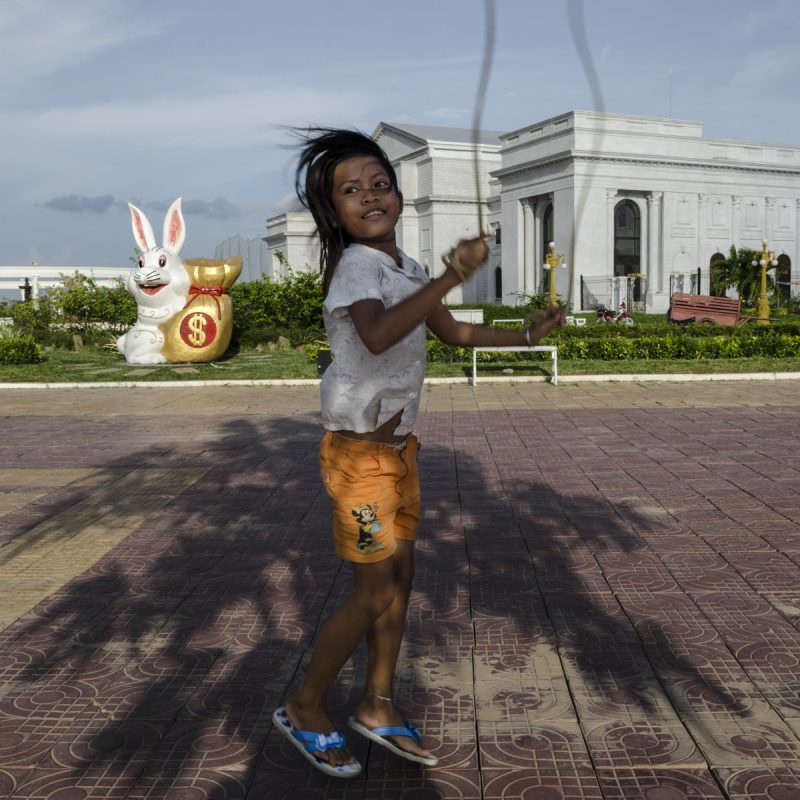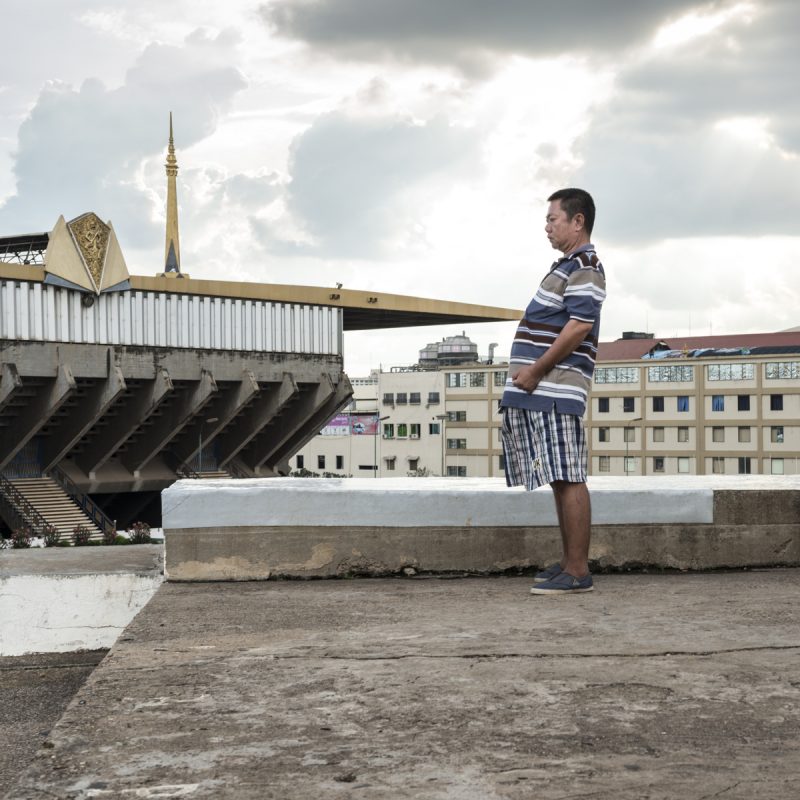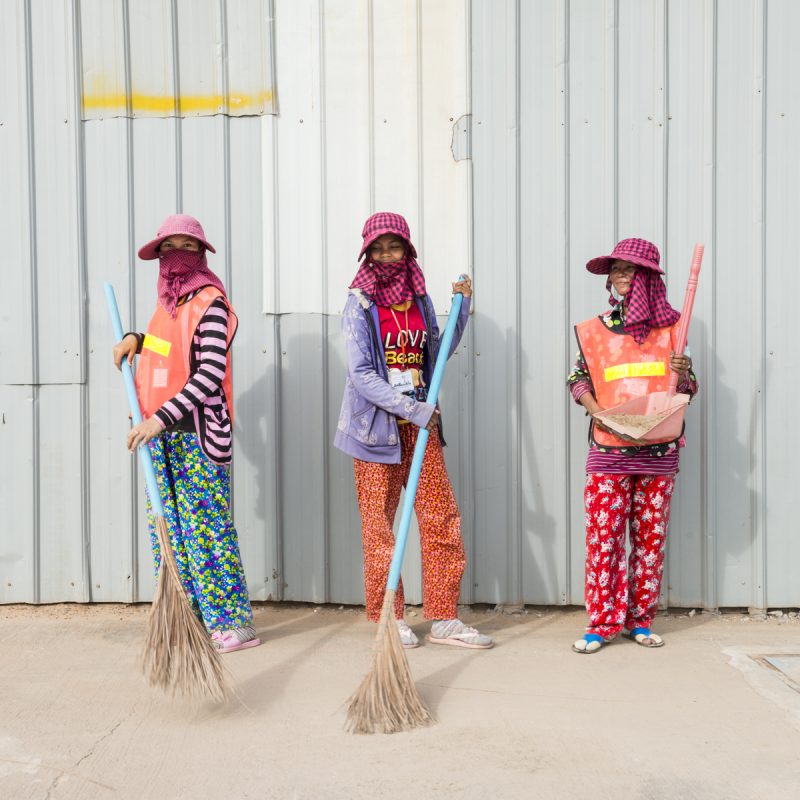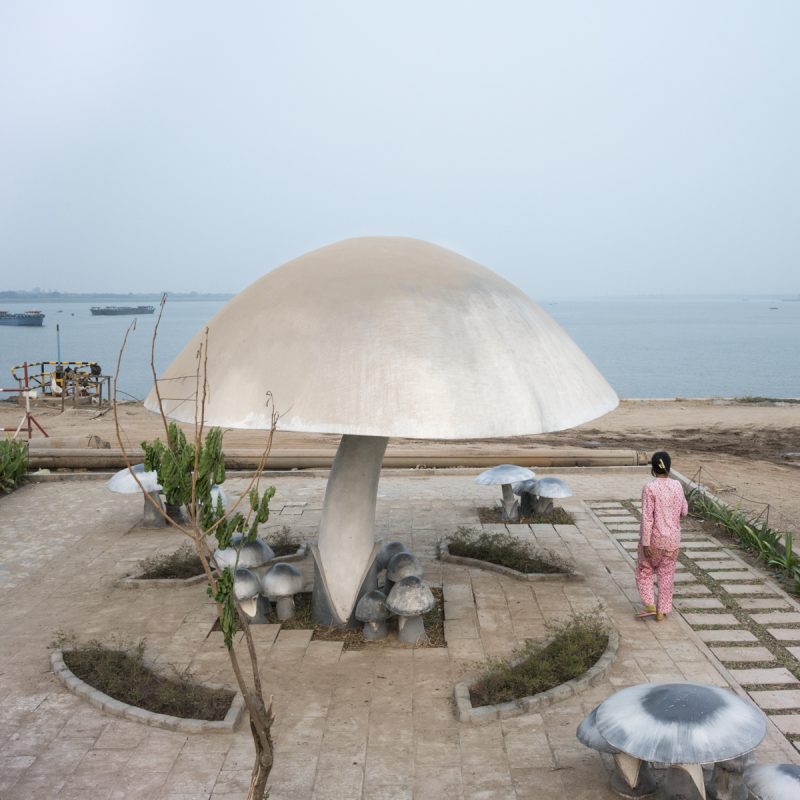Little Stories of Phnom Penh
Marylise Vigneau
2012 – ongoing — Cambodia
About this series
Reality can be witty, inventive or mischievous, even when the backdrop is derelict or tragic. This is especially true in Phnom Penh where different realities blend together, creating a surprisingly complex canvas.
The picture of an old man sitting near a staircase painted with an idealised view of Phnom Pehn is an illustration of this.These little stories are a play between fondness and irony, grace and kitsch, the inner and the strange.
Photographer: Marylise Vigneau
Nationality: French
Based in: Vienna, Austria
Website: www.marylisevigneau.com
Raised in a conventional Parisian family, Marylise Vigneau developed an early taste for peeping through keyholes and climbing walls. Her “Compared Literature” thesis, at la Sorbonne, was about cities as characters in Russian and Central-European novels; where and when the clearest narrative gets lost in a heady, haunting uncertainty.
Despite her fascination with literature, over time her mode of expression has become photography, without her knowing precisely why – may be the mix of precision, immediacy, truth and lies which is behind every image. What attracts her first and foremost is how human beings are affected by borders both physical and mental, this fugitive space where an unexpected, bold and fragile act or glimpse of freedom can arise.
Asia and cities struck by time and oblivion, development or isolation -often the two sides of the same phenomenon- are her favorite terrain. She likes to play with opposites; absence and presence, emptiness and fullness, loneliness and multitude, the very near and the far away.
She is represented by the Anzenberger Agency in Vienna.


